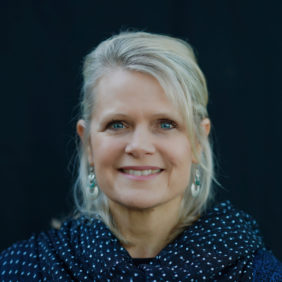If you had a successful business in 2019, you likely experienced some tough setbacks or in other cases, unique opportunities for growth during 2020. Fast forward to 2021, and we’re still working in a very different context than we were before. Most of us are now working either partly or entirely online. Many organizations are either launching or attempting to reinvigorate their DEI initiatives. So, how can we be effective and change-positive stewards for our organizational culture now?
Adapting vs Trashing
The truth is that we’re always adapting and evolving as we go—but the sense of urgency many feel is different than what we’ve experienced before. We’re recognizing that some aspects of our organizational culture that seemed to serve us well in the past, actually weren’t serving us as well as we thought and/or will work as well in the same way in the future.
Tossing out our old culture without an intentional plan to grow a new one isn’t a great idea. Most of the time it’s more productive and meaningful to do things that honor what you’ve had in the past. Honoring what was good and is worth keeping in order to bring it forward might be the better option. Think in terms of evolving it vs just trashing it.
Respect the Process
Sometimes, leaders are more ready to adapt and evolve organizational culture than other people working in the organization are. If you’ve been thinking about things you want to change, the first step is to socialize your thoughts with your team before you decide to roll it out to everyone. Take a co-creation approach around it. Allow others to contribute their ideas and help a vision for the new culture to take shape that isn’t just your vision.
Even if we’re on fire about a new direction, we can’t just drop in a brand-new culture like we would install a new software program and start running it tomorrow. We need to bring people along, recognizing that It’s about engagement and dialogue, not direction and dictation. There’s a change curve we all have to navigate, together.
People who are loyal to and invested in the organizational mission will experience emotions like loss, grief, doubt, and uncertainty as they process culture change. They may need to consider whether they even want to be part of this new culture – how they will now belong within it.
Because organizational culture changes are so impactful for people, it’s important to build in time, space, dialogue and structure around it. (Read more about how to reduce resistance to change here.)
The Details Matter
Speaking of respect and engagement, our abrupt switch to online work last spring has resulted in a big challenge for leaders and team members and having a negative impact on many organizational cultures.
When everyone was in the office (in the Before Times), it was easy for leadership to trust that the work was getting done because they could literally see people “working.” They perceived work was happening because they could directly observe people talking to each other in hallways and conference rooms, creating materials and delivering products or services because it was happening in a shared physical location.
Enter Spring 2020 and along with it, sudden uncertainty around whether work was getting done with many people working from home. Some organizations responded by installing tracking software to monitor the time that team members work – and they plan to continue doing so for remote workers moving forward.
That’s an expensive solution in terms of the hit to employee engagement and morale, and ultimately to organizational culture. It says to your employees, “I don’t trust you. The only way I know for sure that you’re adding value is if I can track how long your eyeballs are looking at the screen.” That’s counterproductive to building a culture of inclusion, vulnerability-based trust, and psychological safety.
If you realize that the moves you’ve made in this tumultuous time have damaged trust and employee morale in your organization, how do you get it back?
Remember the Why
It comes back to remembering your ‘Why’ as an organization. Why do you exist? Who are you trying to serve? What are the levers that power your engine?
We can look to Jim Collins’s Hedgehog Concept: What can we be the best at? What are we deeply passionate about? What really drives our resource engine? Get back in touch with those things and build out from there.
We can lose touch with that along the way because we get distracted by all the new things we’re doing, the new policies we’re putting into place and maybe the new people we’re hiring.
Go back and examine your Why. With that in mind, ask what are the most important things to foster in our culture? What are our values? What’s the best way to support our people in doing their work in a way that’s consistent with our values?
Most values statements don’t have anything to do with being in the office from 8-5. Maybe it’s time to erase that bad translation and think about how we can translate our values to fit our current situation and set us up for a successful future.
This isn’t a quick fix for sure, but it’s a necessary one.


 Heather Leavitt-Martinez (she/her/hers) – Senior Product Manager
Heather Leavitt-Martinez (she/her/hers) – Senior Product Manager Wendy Ryan (she/her/hers) – CEO
Wendy Ryan (she/her/hers) – CEO Shawn Bunger (she/her/hers) – Senior Consultant
Shawn Bunger (she/her/hers) – Senior Consultant Crystal Whiteaker (she/her/hers) – Senior Consultant
Crystal Whiteaker (she/her/hers) – Senior Consultant Gail Finger (she/her/hers) – Senior Consultant
Gail Finger (she/her/hers) – Senior Consultant Monica Silkwood (she/her/hers) – Director of Operations and Experience
Monica Silkwood (she/her/hers) – Director of Operations and Experience Johanna Lyman (she/her or they/them) Senior Consultant
Johanna Lyman (she/her or they/them) Senior Consultant Sherri Horan (she/her/hers) – Senior Consultant
Sherri Horan (she/her/hers) – Senior Consultant
